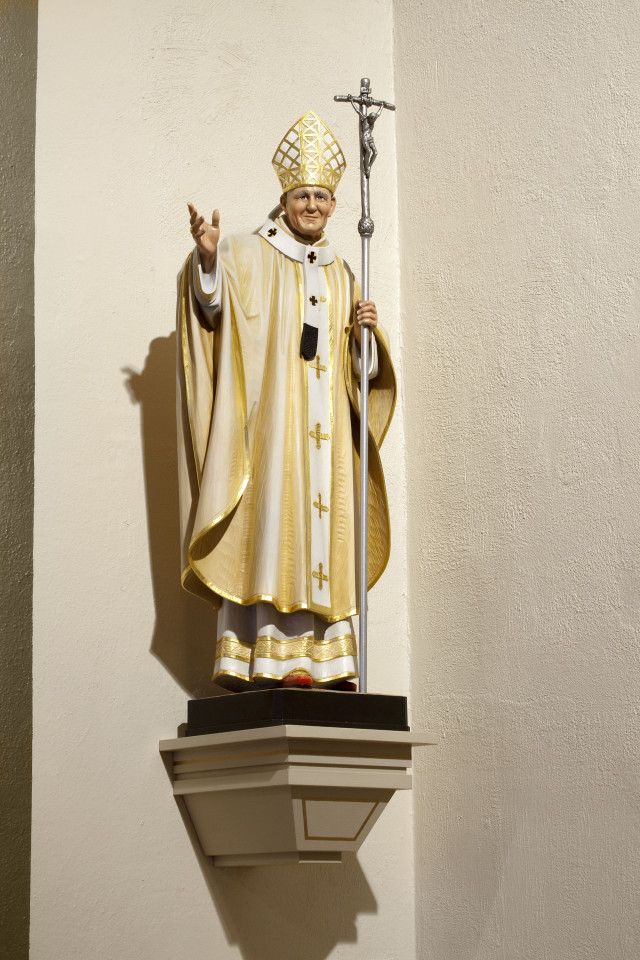Saint John Paul II was canonized on April 27, 2014 by Pope Francis. The statue of Pope St. John Paul II was dedicated on the Feast of St. John Paul II October 22, 2014 by Father Joseph Workman.The purchase of this statue was made possible by an anonymous donor.
This statue located to the right of the altar of the Sacred Heart of Jesus was made in by The Demetz Art Studio located in Ortisei, a small village nestled in the Dolomites Mountain Range in the Northern part of Italy, at the heart of the Alps. In this region the tradition of woodcarving dates back to the 16th century, passed on from father to son over many generations.
Born in Wadowice, Poland, Karol Jozef Wojtyla had lost his mother, father and older brother before his 21st birthday. Karol’s promising academic career at Krakow’s Jagiellonian University was cut short by the outbreak of World War II. While working in a quarry and a chemical factory, he enrolled in an “underground” seminary in Kraków. Ordained in 1946, he was immediately sent to Rome where he earned a doctorate in theology.
Back in Poland, a short assignment as assistant pastor in a rural parish preceded his very fruitful chaplaincy for university students. Soon he earned a doctorate in philosophy and began teaching that subject at Poland’s University of Lublin. Suprisingly,Communist officials allowed him to be appointed auxiliary bishop of Kraków in 1958, considering him a relatively harmless intellectual. They could not have been more wrong!
He attended all four sessions of Vatican II and contributed especially to its Pastoral Constitution on the Church in the Modern World. Appointed as archbishop of Kraków in 1964, he was named a cardinal three years later.
Elected pope in October 1978, he took the name of his short-lived, immediate predecessor. Pope John Paul II was the first non-Italian pope in 455 years. In time, he made pastoral visits to 124 countries, including several with small Christian populations. Pope St. John Paul II promoted ecumenical and interfaith initiatives, especially the 1986 Day of Prayer for World Peace in Assisi. He visited Rome’s Main Synagogue and the Western Wall in Jerusalem; he also established diplomatic relations between the Holy See and Israel. He improved Catholic-Muslim relations and in 2001 visited a mosque in Damascus, Syria.
The Great Jubilee of the Year 2000, a key event in John Paul’s ministry, was marked by special celebrations in Rome and elsewhere for Catholics and other Christians. Relations with the Orthodox Churches improved considerably during his ministry as pope.
“Christ is the center of the universe and of human history” was the opening line of his 1979 encyclical, Redeemer of the Human Race. In 1995, he described himself to the United Nations General Assembly as “a witness to hope.”


